
John Henry Bufford (1810-1870) was a lithographer in 19th-century Boston, Massachusetts.

John Henry Bufford (1810-1870) was a lithographer in 19th-century Boston, Massachusetts.
Bufford trained "in the Pendleton shop in Boston from 1829 to 1831." [1]
In 1835 he moved to New York, where he "worked independently for five years while accepting commissions from George Endicott and Nathaniel Currier." [1] Bufford returned to Boston in 1839, and became "chief artist" in the print shop owned by Benjamin W. Thayer (who had bought the Pendleton outfit)." [2]
By 1844, the shop's name changed to J.H. Bufford & Co. (1844–1851)." [2] By one assessment, "Bufford's firm produced lively, accomplished images in many forms, including sheet music, city views, marine views and landscapes, book illustrations, reproductions of paintings, commercial depictions of factories, and contemporary genre views; ... [and] lithographic portraits copied from daguerreotypes." [3] Artists who worked for Bufford included Francis D'Avignon, Winslow Homer, and Leopold Grozelier. [3] Clients included music publisher William H. Oakes.
In the 1840s-1860s Bufford lived in Roxbury and worked on Washington Street:
After Bufford's death in 1870, his sons Frank G. Bufford and John Henry Bufford, Jr. continued the business. [8] By 1879, "J.H. Bufford's Sons, Manufacturing Publishers of Novelties in Fine Arts" worked from offices at 141-147 Franklin Street, Boston; and in 1881–1882 expanded the enterprise as far as New York and Chicago. [9]

Lithography is a planographic method of printing originally based on the immiscibility of oil and water. The printing is from a stone or a metal plate with a smooth surface. It was invented in 1796 by the German author and actor Alois Senefelder and was initially used mostly for musical scores and maps. Lithography can be used to print text or images onto paper or other suitable material. A lithograph is something printed by lithography, but this term is only used for fine art prints and some other, mostly older, types of printed matter, not for those made by modern commercial lithography.

Currier and Ives was a New York City printmaking business operating from 1835 to 1907. Founded by Nathaniel Currier, the company designed and sold inexpensive hand-painted lithographic works based on news events, views of popular culture and Americana. Advertising itself as "the Grand Central Depot for Cheap and Popular Prints," the corporate name was changed in 1857 to "Currier and Ives" with the addition of James Merritt Ives.

Richard Upjohn was a British-born American architect who emigrated to the United States and became most famous for his Gothic Revival churches. He was partially responsible for launching the movement to popularity in the United States. Upjohn also did extensive work in and helped to popularize the Italianate style. He was a founder and the first president of the American Institute of Architects. His son, Richard Michell Upjohn, (1828-1903), was also a well-known architect and served as a partner in his continued architectural firm in New York.

Nathaniel Currier was an American lithographer. He headed the company Currier & Ives with James Ives.
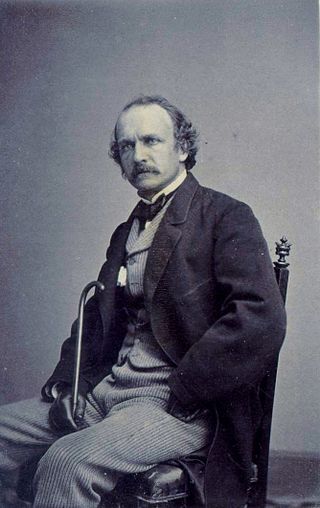
Felix Octavius Carr Darley, often credited as F. O. C. Darley, was an American illustrator, known for his illustrations in works by well-known 19th-century authors, including James Fenimore Cooper, Charles Dickens, Mary Mapes Dodge, Nathaniel Hawthorne, Washington Irving, George Lippard, Henry Wadsworth Longfellow, Donald Grant Mitchell, Clement Clarke Moore, Francis Parkman, Harriet Beecher Stowe and Nathaniel Parker Willis.

Fitz Henry Lane was an American painter and printmaker of a style that would later be called Luminism, for its use of pervasive light.

Samuel Thomas Gill, also known by his signature S.T.G., was an English-born Australian artist.
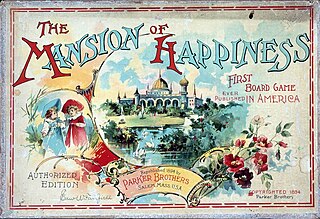
The Mansion of Happiness: An Instructive Moral and Entertaining Amusement is a children's board game inspired by Christian morality. Players race about a 67-space spiral track depicting virtues and vices with their goal being the Mansion of Happiness at track's end. Instructions upon virtue spaces advance players toward the goal while those upon vice spaces force them to retreat.

The Old Corner Bookstore is a historic commercial building located at 283 Washington Street at the corner of School Street in the historic core of Boston, Massachusetts. It was built in 1718 as a residence and apothecary shop, and first became a bookstore in 1828. The building is a designated site on Boston's Freedom Trail, Literary Trail, and Women's Heritage Trail.

W. H. Oakes was a music publisher in 19th-century Boston, Massachusetts. He published compositions by Daniel Auber, Henry Russell and others.
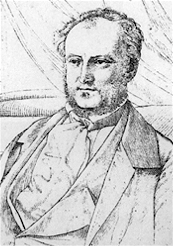
John Plumbe Jr. was a Welsh-born American entrepreneurial photographer, gallerist, publisher, and an early advocate of an American transcontinental railroad in the mid-19th century. He established a franchise of photography studios in the 1840s in the U.S., with additional branches in Paris and Liverpool. He created a lithographic process for reproducing photographic images, called the "plumbeotype."

Pendleton's Lithography (1825–1836) was a lithographic print studio in 19th-century Boston, Massachusetts, established by brothers William S. Pendleton (1795-1879) and John B. Pendleton (1798-1866). Though relatively short-lived, in its time the firm was prolific, printing portraits, landscape views, sheet music covers, and numerous other illustrations. The Pendleton's work might be characterized by its generosity—each print contains a maxima of visual information designed for graphic reproduction.
The Boston Brigade Band was a brass and reed band that performed in Boston, Massachusetts, and elsewhere in New England. Some of the musical pieces played by the band were subsequently published as sheet music, including "The Mammoth Cod Quickstep" of 1839. The band received acclaim in its day, particularly for its combination of both brass and woodwind instruments.

The Boston Journal of Natural History (1834-1863) was a scholarly journal published by the Boston Society of Natural History in mid-19th century Massachusetts. Contributors included Charles T. Jackson, Augustus A. Gould, and others. Each volume featured lithographic illustrations, some in color, drawn/engraved by E.W. Bouvé, B.F. Nutting, A. Sonrel, et al. and printed by Pendleton's Lithography and other firms.
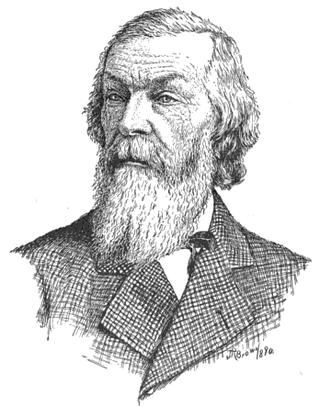
Benjamin Franklin Nutting was an artist in Boston, Massachusetts, in the 19th century. He taught drawing in local schools, published do-it-yourself drawing instruction materials, and showed his artwork in several exhibitions.

Federal Street is a street in the Financial District of Boston, Massachusetts. Prior to 1788, it was known as Long Lane. The street was renamed after state leaders met there in 1788 to determine Massachusetts' ratification of the United States Constitution.
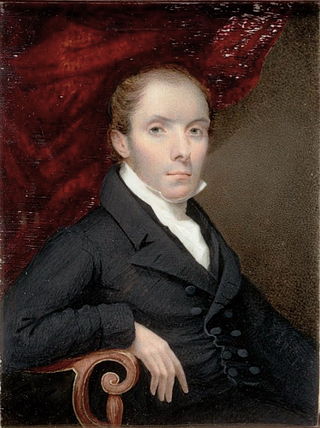
Thomas Edwards (1795–1869) was an artist in 19th-century Boston, Massachusetts, specializing in portraits. Born in London and trained at the Royal Academy, he worked in Boston in the 1820s-1850s, and in Worcester in the 1860s.

John White Allen Scott was an American painter and lithographer associated with the Hudson River School and White Mountain art.

Horticultural Hall (1845-1860s) of Boston, Massachusetts, stood at no.40 School Street. The Massachusetts Horticultural Society erected the building and used it as headquarters until 1860. Made of granite, it measured "86 feet in length and 33 feet in width ... [with] a large hall for exhibitions, a library and business room, and convenient compartments for the sale of seeds, fruits, plants and flowers." Among the tenants: Journal of Agriculture; Azell Bowditch's seed store; and Morris Brothers, Pell & Trowbridge minstrels.

Henry R. Robinson, also known as H. R. Robinson was an American lithographer and publisher active in New York City between 1831 and 1850.
{{cite journal}}: Missing or empty |title= (help)